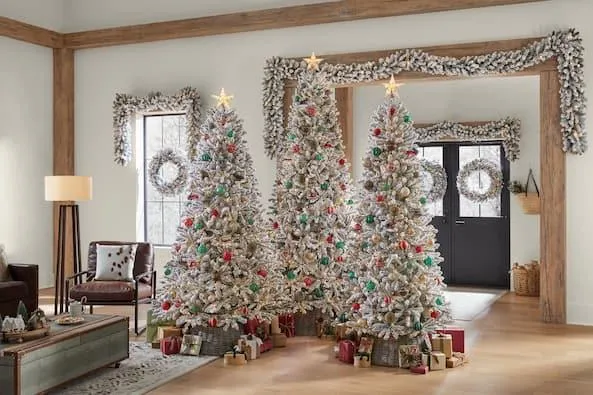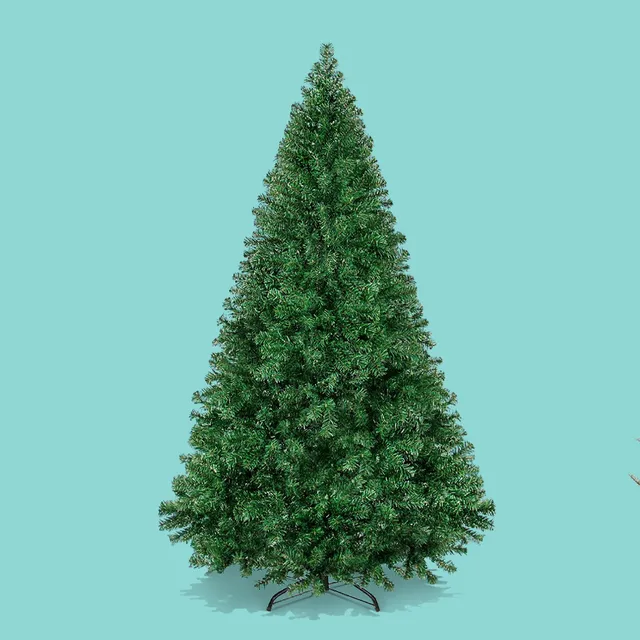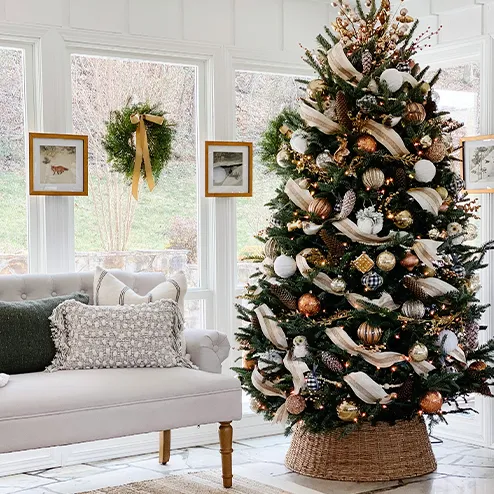Everything You Need to Know About Having Indoor Real Trees
Has the thought of adding a living, breathing tree to your indoor space piqued your interest? You’re not alone. More and more people are opting to bring the beauty of nature inside with potted indoor trees. However, real trees require ongoing care and maintenance that artificial trees do not. In this article, I’ll cover all the important factors to consider when deciding if an indoor real tree is right for you.
Choosing the Right Tree Species
One of the most important decisions is selecting a tree variety that can thrive in indoor conditions. From my experience helping customers choose indoor trees, here are some top options to consider:
- Dracaena: This tropical evergreen tree comes in many varieties and colors. It tolerates low-light conditions well and is very low maintenance.
- Money Tree: With its braided trunk and round, dark green leaves, the money tree is a classic indoor choice. It grows slowly and doesn’t require much light.
- Kentia Palm: With a striking trunk and feather-like fronds, the kentia palm brings a tropical vibe indoors. Provide it with bright, indirect light for best growth.
- Rubber Plant: Its thick, shiny leaves come in green or variegated varieties. Rubber plants thrive in medium light and don’t need frequent watering.
While trees like ficus, citrus and avocado can work, they may outgrow typical indoor spaces or be susceptible to issues without optimal conditions. Stick with low-light varieties suited to life as a houseplant.
Choosing a Pot and Planting Medium
The container is just as important as the tree species. Pots should have good drainage holes and be sized appropriately for your tree’s eventual size. Terra cotta and plastic work well. As for soil, houseplant potting mixes ensure proper drainage and aeration for indoor growing. Make sure to loosen any roots and plant at the same level as the nursery pot.
Optimal Growing Conditions
Indoor trees need certain factors to thrive that may differ from outdoor trees. Here are some tips based on my experience growing trees indoors:

- Light: Most houseplants prefer medium or low light from an east or west-facing window. Avoid direct afternoon sun which can scorch leaves.
- Temperature: Between 65-80°F is ideal for tropical varieties. Watch for drafts near windows or vents.
- Humidity: Higher humidity levels around 40-60% help leaf growth and prevent browning leaf tips. Consider a humidifier.
- Watering: Allow top 1-2 inches of soil to dry between waterings. Water thoroughly when dry and avoid soggy soil.
- Fertilizing: Use a balanced liquid houseplant fertilizer monthly during spring and summer growth periods.
Pay attention to your tree’s needs and be willing to tweak conditions to keep it thriving indoors versus its natural habitat. That level of care is key for real trees inside.
Common Pests and Problems
Occasionally problems may arise with indoor trees like any houseplant. Here are some issues I’ve personally dealt with and tips on treatment:
- Spider Mites: Tiny spider-like pests cause stippling on leaves. Isolate the plant and spray with insecticidal soap weekly until gone.
- Scale: Hard, shell-like insects cling to stems. Gently scrap them off with a fingernail and treat with horticultural oil.
- Mealybugs: Fluffy white spots secrete honeydew. Wipe leaves with alcohol on a cotton ball or use systemic insecticide.
- Root Rot: From overwatering, the base turns mushy. Cut away rotted sections and improve drainage to save the plant.
Proper care and monitoring tree health is key to avoiding or swiftly treating any issues. Don’t panic at the first sign of an uncommon pest—most problems have simple solutions.
The Ongoing Commitment of Indoor Trees
While real trees provide allure, it’s important to go into indoor tree ownership with realistic expectations. From experience, here are some factors that require continual dedication:
- Watering: Trees may need water weekly or even daily depending on size and conditions.
- Fertilizing: Providing nutrients helps trees maintain foliage and growth patterns indoors.
- Pruning: Removing dead or damaged material promotes thickening and preserves shape over the years.
- Repotting: As root systems expand, pots will need upgrading every few years to sustain growth.
- Pest Monitoring: Check leaves regularly and treat issues promptly before major damage occurs.
Houseplants take effort to keep looking their best long-term. Before diving in, make sure you have the time and schedule flexibility for regular tree care duties.

Weighing the Pros and Cons
Ultimately, whether an indoor tree is right for you depends on balancing the pros against potential cons in your home environment:
Pros:
Cons:
For committed plant parents, real indoor trees offer life-enhancing greenery indoors. With diligent care obligations in mind, they can make wonderful additions to any home for many years. Ultimately trust your preferences—both real and artificial options have a place.
I hope this overview has provided comprehensive answers to your intentions around integrating real trees as houseplants. Please reach out if you have any other questions. Happy growing!

Choosing an Indoor Christmas Tree
| Tree Type | Water Needs | Drop Resistance | Lifespan | Size Options |
|---|---|---|---|---|
| Douglas Fir | Moderate | High | 3-4 weeks | 5-9 feet |
| Noble Fir | Moderate | Moderate | 4-6 weeks | 5-10 feet |
| Fraser Fir | Low | Low | 4-6 weeks | 5-10 feet |
| Balsam Fir | High | High | 2-4 weeks | 5-8 feet |
| Scotch Pine | Low | High | 2-4 weeks | 4-8 feet |
| White Pine | Low | Moderate | 2-4 weeks | 5-10 feet |
FAQ
-
Do live indoor Christmas trees cause allergy problems?
While some folks are allergic to indoor trees, it is not extremely common. Many people with plant allergies don’t face issues. Using an artificial tree can eliminate allergies but live trees smell amazing! To be safe, check if you are allergic before bringing inside.
-
How long does a live tree last indoors?
Most trees stay fresh looking for about 4 weeks inside. However, hot or drafty areas cause trees to dry out faster. Keeping the tree stand filled with lukewarm water every day helps it last the longest. Are 4 weeks worth the beauty? You be the judge!
-
Are artificial trees better for the environment?
Believe it or not, artificial trees have a larger carbon footprint if used less than 5 years. Live trees are renewable and recyclable after holidays. Many communities collect trees for wildlife habitats. So an old fashioned live tree seems to be a greener option long term. Weigh the environmental pros and cons before making your choice.
-
How do you pick a good live tree?
When selecting your fresh tree, give it a gentle shake. If lots of needles fall out, keep looking! Choose a tree with sturdy branches. The needles should be supple and green. Dig the database in your mind from past tree memories to pick your fave type! A good tree means a merry Christmas.

-
Should you bring your tree inside before or after decorating?
Some people think it’s better to decorate the tree outside before lugging it indoors. But there’s no right answer. Maybe decorate inside for easy access? Or decorate outside to prevent pine needle mess? Hmm, what to do? I guess it depends on your energy level for cleaning! Why not decorate wherever gets you into the Christmas spirit?
-
What’s the best way to dispose of a live tree after Christmas?
Many towns collect trees for recycling into mulch. That’s awesome! Or you can toss branches in the yard for wildlife housing. At the same time, don’t put whole trees in the dump—they take years to decompose. So check local dispose rules. Or donate your tree to the community for their uses. Then you feel good about recycling that tree.
-
Is there any way to keep a tree fresher longer?
Apart from daily water, keep trees out of direct sun or near heat sources which will dry them out faster. Cutting 1/2 inch off the trunk before placing in water may also help it absorb more. And spray tree with water occasionally if it seems dry. But sometimes they just get tired no matter what. Enjoy them while you can!
